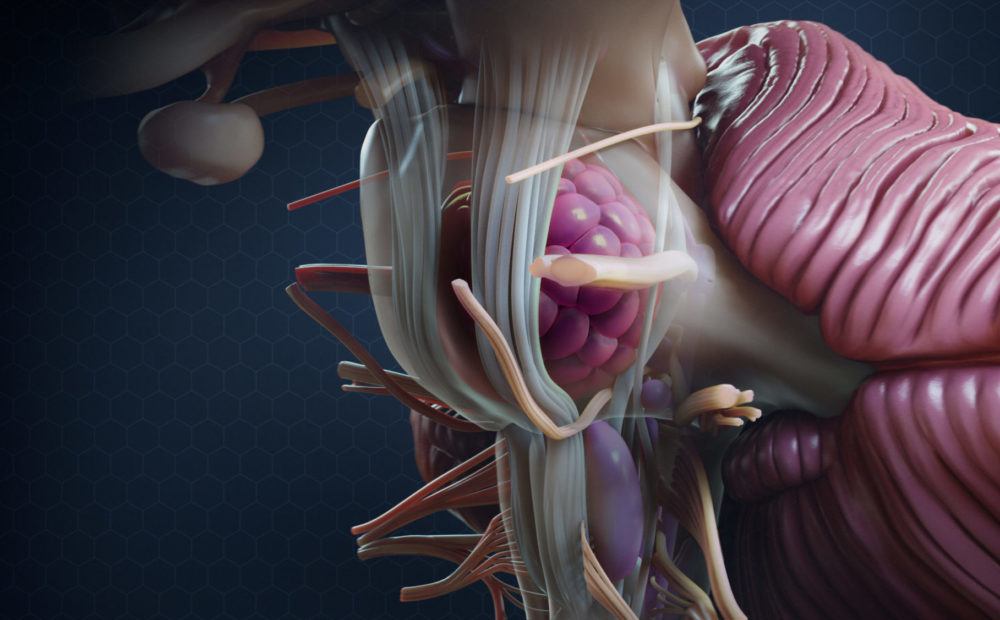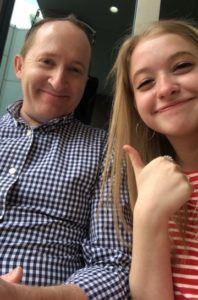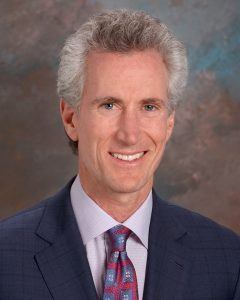
Father, Daughter Undergo Cavernous Malformation Surgeries at Barrow
Just over a year ago, Keith Norton and his teenaged daughter, Emerson, faced uncertain futures after being diagnosed with familial cerebral cavernous malformations, a condition in which abnormal clusters of blood vessels are embedded in normal brain tissue and can cause brain hemorrhaging. Without proper diagnosis and treatment, cavernous malformations can lead to loss in motor and movement functions and even death.
“Where last year was just kind of survive and advance, we are really looking forward to savoring 2020,” says Keith Norton, a 46-year-old dentist. “We get to move forward, and that’s a tremendous blessing.”
Indeed, Emerson Norton, 17, quickly resumed her academic career at Mesa’s Mountain View High School, where she is a straight-A student and budding concert pianist, and Keith Norton resumed treating his patients at his dental practice only three weeks after his brain surgery.

The Nortons’ story took a dramatic turn on Oct. 30, 2018, when Keith Norton was admitted to Barrow with bleeding in his brain. That same day, Emerson Norton began to experience severe headaches – the first signs of what turned out to be a hereditary cavernous malformation.
“These are very rare,” Dr. Lawton says. “Only about 15 to 20 percent of all cerebral cavernous malformations are the familial type.”
“I remember thinking, ‘What is wrong with our family?’ Are we all going to have these?’ ” says Emerson Norton, the third of four Norton sisters. “I didn’t want everyone else to have one. I was glad to finally have an answer about what was going on in my brain.”
Dr. Lawton removed Emerson Norton’s cavernous malformation from her left temporal lobe on Jan. 3, 2019. Nine months later, he removed a cavernous malformation from Keith Norton – a trickier procedure because Keith’s was located in his brainstem.
“Cavernous malformations are very rare and the surgery is complex,” Dr. Lawton says. “Very few surgeons can perform this type of surgery but because of Barrow’s expertise treating serious neurological conditions and diseases, Barrow surgeons have among the most experience of any center in the world in treating these types of disorders.”
Keith Norton turned to Barrow after another neurosurgeon told him that his cavernous malformation was untreatable because of its location. “The first neurosurgeon I saw said, ‘Well, there’s nothing we can do about it. You’re just going to have to live with it,” Keith Norton says.

Keith Norton says his mother underwent surgery in the 1990’s to treat a very rare brain condition called an arteriovenous malformation (AVM), a neurological disorder that causes abnormal tangles of arteries and veins in the brain. Because AVM’s and cavernous malformations can be hereditary, Keith Norton’s two oldest daughters each underwent precautionary MRIs, which revealed no malformations. The family’s youngest daughter is too young to be tested.
Now fully recovered and thriving, the Nortons are thankful for their health and for the skilled expertise of Dr. Lawton.
“I’m delighted with the tremendous progress Keith and Emerson Norton have made following their surgeries,” Dr. Lawton says. “Barrow is the place that patients anywhere in the world can come to when they need neurosurgical expertise, especially for these types of complex procedures.”
Barrow performs more neurosurgeries annually than any hospital in the United States and is routinely listed by U.S News & World Report as among the best hospitals in the nation for neurological and neurosurgical care. Barrow is part of Dignity Health St. Joseph’s Hospital and Medical Center.
